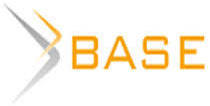Guidelines for Authors
- A manuscript must be created in a Microsoft Word format (doc, docx), using Times New Roman 14-point font, single-spaced.
- The maximum length of a paper is 20,000-40,000 characters (including spaces), or 10-20 A4 pages (including tables, graphs, and references).
- References to sources are given in the main text in parentheses in the following form: author (s), year of publication: number of the page cited. Examples: (Habermas, 2008: 14), (Garfinkel, 2002: 156-157), (Heath, Hindmarsh, Luff, 2010).
- References (at least 10 entries) must be placed at the end of your paper in the alphabetical order. Throughout the paper, the references (author’s last name, the year of publication and the page number separated by comma) are to be given in square brackets at the exact point in your document where you refer to someone else’s work.
- Self-citing must not exceed 20% of the references.
- You can see a paper layout in Appendix 2.
- An example of the structure of the article is presented in Appendix 3.
Do not use footnotes for reference, except for documents or web sites with no author.
- No bulky labels are allowed in figures, instead use letters or numbers to designate parts of the figure and explain them in the legend to the figure.
- When referring to a grant throughout the paper, please include relevant funding information such as funding agencies, the grant title and its number in «Acknowledgements».
Papers are reviewed by independent experts in the subject appointed by the Editorial Board. Upon completion of the reviewing process, an author receives a copy of the manuscript with a reviewer’s comments. When deciding on publishing a paper, the Editorial Board considers the date of receiving the final copy of the paper.
Information about the author
Send the information about the author (See Appendix 1) as a separate file when submitting the manuscript.
APPENDIX 1
Information about the author
Surname First name (in full)
Organization, Department
Post
Academic degree, Academic rank
Title of the article
APPENDIX 2
Books:
1. Abbott, A. (1988), System of Professions: An Essay on the Division of Expert Labor, University of Chicago Press, Chicago, IL.
2. McCarthy, P. and Hatcher, C. (1996), Speaking persuasively: Making the most of your presentations, Allen and Unwin, Sydney, NSW.
Journals and Proceedings:
Bessant, J. and Webber, R. (2001), “Policy and the youth sector: youth peaks and why we need them”, Youth Studies Australia, 20 (1), 43–47.
Dissertation
Gibbs, A. (2004), "MBA Quality – An investigation into stakeholders’ perspectives", Ph.D. Thesis, Oxford Brookes University, Oxford, UK.
Dissertation abstract
Gibbs, A. (2004), "MBA Quality – An investigation into stakeholders’ perspectives", Abstract of Ph.D. dissertation, Oxford Brookes University, Oxford, UK.
Electronic sources
Young, C. (2001), English Heritage position statement on the Valletta Convention [Online], available at: http://www.archaeol.freeuk.com/EHPostionStatement.htm (Accessed 4 August 2011).
APPENDIX 3
A PAPER LAYOUT
TITLE
Full name
Full name of an affiliation (in the nominative case), business address: house number, street name, city, zip code, country
Abstract
At least 1,000 characters (including spaces)
Key words: maximum 8 words separated by a semi-colon
The text of the paper should be logically structured:
INTRODUCTION
Theoretical review
Research Results and Discussion
CONCLUSION
REFERENCES
Information about the author/s:
Full name, job title, academic degree and academic rank
















